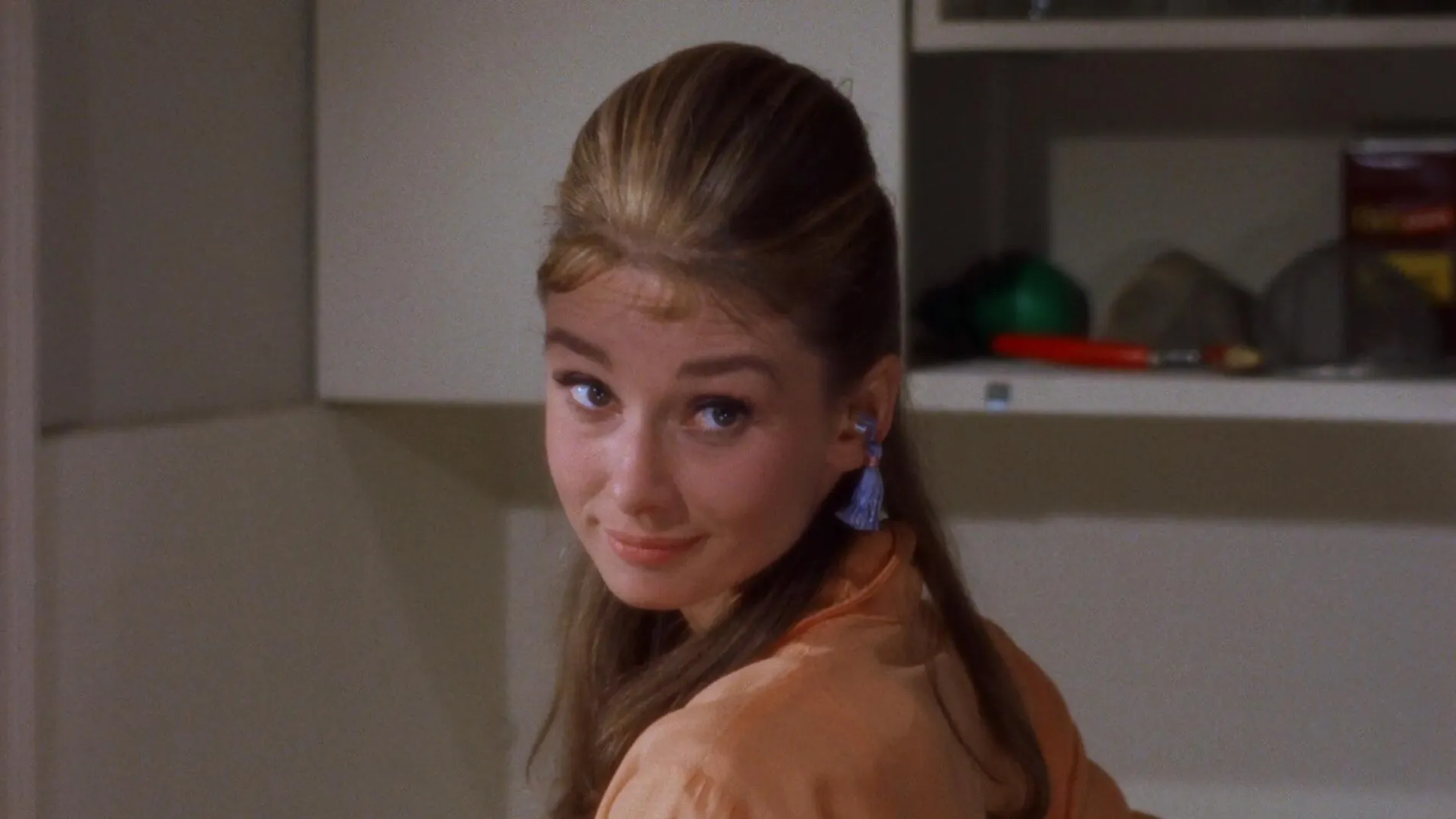Breakfast at Tiffany's
dir. Blake Edwards, 1961

There is a surreality to watching an older, classic movie. Witnessed is a segment of life shelved away from the stream of time. Breakfast at Tiffany’s is a picture tethered to a specific stylish moment. It’s a well-worn admission but I’m a sucker for 60s steez — especially in a mid-century New York setting.
Writer Paul Varjak (George Peppard) meets socialite Holly ‘Golightly’ (Audrey Hepburn) when he moves into her building in the Upper East Side. Paul asks to use the telephone; she obliges but realises she’s late for an engagement. Holly pins her hair and dabs eyelashes while sending Paul on a quest for missing ‘alligator’ shoes. He gently detangles the mystery of Holly’s morning rush like a daytime TV detective unpacking a murder. Mid-chaos her cat — ‘Cat’ — jumps onto his shoulders. She fondly nicknames her new neighbour ‘Fred’ after her similar-looking brother. It’s a charming interaction that waters the seed of their soon-to-be friendship.
Paul and Holly sneak in and out of each other’s apartment windows like boarding school pals. Their closeness defies unwritten rules of city-living: ‘And I always heard people in New York never get to know their neighbours’, he says. Even so, the pair have a foundation upon which to become accomplices. Both stoke aspirations of wealth and success by maintaining transactional relationships with steady bankrollers. Or, as Holly affectionately calls them, ‘super rats’ — with easy-opening cheque books. In a city of dreamers, reality lays down a harsh lesson in the trade-off between pride and money. In the business of ‘making it’, needs must.
Holly hosts evening cocktails in her modest living room; she drapes a bath towel over herself as a makeshift gown. Paul gifts her his Times Book Review approved novel Nine Lives. She shelves the title alongside knick-knacks, and with it the intention of it ever being opened: ‘Doesn’t that look nice?’ Holly’s agent whispers to ‘Fred-baby’ (Paul) that Holly is a ‘real phoney’. Her identity is curated, of course, but it’s a self-aware creation. She is the manufacturer of her pseudo-celebrity persona.
Golightly is a Daisy Miller type. Her naïve yet spirited attitude is not to be emulated but bewitches those around her. Hepburn’s interpretation is masked by enough charisma to distract from her character’s tragic beginnings. It’s a shimmering veil — or bath towel — tossed over depressing circumstances. Paul Varjak is simpler creature. His are eyes through which we may observe Holly’s charms and understand her motivations. Paul cares for her, but confuses loving with possessing. She’s a ‘wild thing’ that resists being caged by male affections.
I would be remiss not to mention the 1958 text from which the film steals inspiration. Truman Capote’s works have the temerity and scandal of gossip columns but with literary integrity. Tiffany’s sits apart from crime stories like In Cold Blood, but remains concerned with figures of infamy and affairs surrounding unlikely celebrity. The novella and movie share blueprints but the latter has been given the Hollywood treatment. If you desire the truer depiction try opening the book.